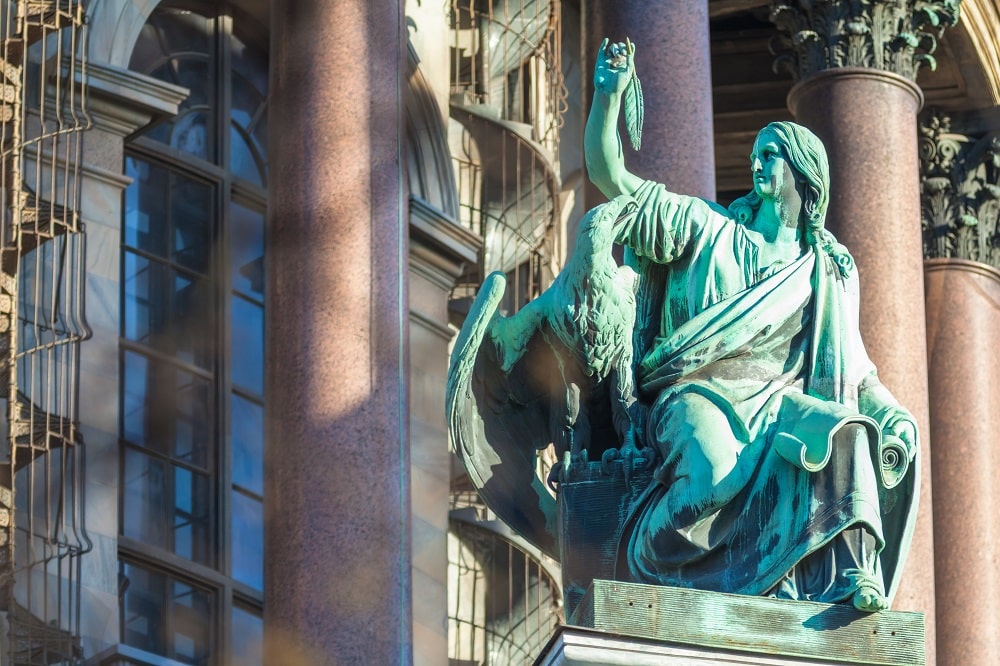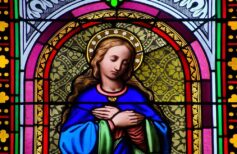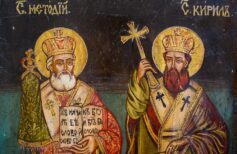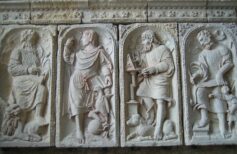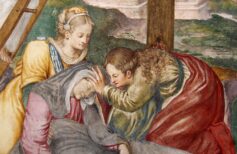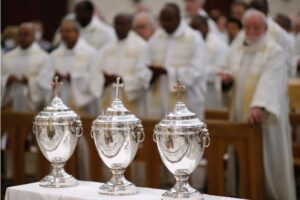Giovanni, the beloved disciple of Jesus. A fisherman, like the brothers Simon Peter and Andrew, he had a special relationship with Christ. Here’s why
We have seen on many occasions how much importance Jesus attributed to friendship and how much He valued His friends. This was evident with Martha, Mary, and Lazarus of Bethany, as well as with the many women who followed Him and listened to His words. It is reasonable to think that He had a deep connection with the Apostles, His closest disciples, the twelve chosen to share everyday life with Him. Among them, there was a beloved disciple, with whom He had a particularly tender relationship: the apostle John, the brother of Simon Peter and Andrew, and the author of the Fourth Gospel.

Who were the 12 apostles and discover the difference between apostles and disciples
Who were the 12 apostles, companions of Jesus in the short span…
In reality, none of the Gospels reveals the name of the beloved disciple. Not even in the Gospel of John himself, who remains anonymous, just like all the other Evangelists. In the Gospel of John, the apostle never mentions his own name; the only John he talks about is John the Baptist. However, it is in his Gospel that he narrates, in various passages, the affectionate attitude of Jesus towards this mysterious beloved disciple:

During the Last Supper, when Jesus reveals who will betray Him:
“Now there was leaning on Jesus’ bosom one of His disciples, whom Jesus loved. Simon Peter therefore motioned to him to ask: “Say, who is this one he means?” Leaning back against Jesus, he asked him, ‘Lord, who is it?'” (John 13:23)
Beneath the Cross:
“When Jesus therefore saw His mother, and the disciple whom He loved standing by, He said to His mother, ‘Woman, behold your son!’ Then He said to the disciple, ‘Behold your mother!’ And from that hour that disciple took her to his own home.” (John 19:26-27)
At the Resurrection:
“Now on the first day of the week, Mary Magdalene went to the tomb early, while it was still dark, and saw that the stone had been taken away from the tomb. Then she ran and came to Simon Peter, and to the other disciple, whom Jesus loved, and said to them, ‘They have taken away the Lord out of the tomb, and we do not know where they have laid Him.'” (John 20:1-2)
And others. Therefore, it is not in the Gospels but in tradition that we must seek the identity of this beloved disciple, whom Jesus loved and who played a special role in His death and Resurrection. Perhaps because Love is the key to understanding a great and terrible mystery like Death, and only those who can approach this great mystery with an innocent and pure heart can be witnesses and participants.

The apocryphal gospels: what differentiates them from the canonical ones
The apocryphal gospels are not part of the New Testament…
Particularly significant is the passage where the disciple loved by Jesus is at the foot of the Cross. We know that tradition places the three Marys, the pious women who followed Christ in His last moments, in that position. None of the twelve Apostles of Jesus is present in this high and terrible moment, but in the Gospel of John, the disciple whom Jesus loved appears. Not only does he witness the agony of his Master, but he also receives the task from Him to take care of the Virgin Mary, His mother, as if he were her son. Even in this episode, love takes precedence, even in the face of agony and death. Jesus confronts His destiny with an extreme act of love, entrusting His mother to the disciple He loves and entrusting him to her, to overcome the annihilation and evil that are overcoming Him.

Saint Peter and Paul, why are they celebrated together?
On June 29, Saint Peter and Paul are celebrated. Two apostles, two very different men, both fundamental to the history of the Church…
As for the choice to leave the beloved disciple anonymous, it is dictated by the will of the Evangelist John to allow anyone who reads to identify themselves because, in reality, every disciple of Jesus is a beloved disciple, special precisely because they are unique. In this light, one of the last passages of the Gospel of John becomes clearer when Peter asks Jesus, “What about him?” (John 21:21), referring to the disciple whom Jesus loves, and Jesus answers, “If I will that he remain till I come, what is that to you? You follow Me!” (John 21:22), emphasizing the importance of love, no less important than commitment and dedication.
But if John the Evangelist was the beloved and favoured disciple, why did Jesus entrust Peter with the foundation and care of the Church?

Saint Peter in the Vatican: Church symbol of the whole Christian world
Saint Peter in the Vatican is a basilica full of meanings, mysteries…
Peter also loves Jesus, despite denying Him. Jesus himself questions him about that love: “So when they had eaten breakfast, Jesus said to Simon Peter, ‘Simon, son of Jonah, do you love Me more than these?’ He said to Him, ‘Yes, Lord; You know that I love You.’ He said to him, ‘Feed My lambs.’ He said to him again a second time, ‘Simon, son of Jonah, do you love Me?’ He said to Him, ‘Yes, Lord; You know that I love You.’ He said to him, ‘Tend My sheep.’ He said to him the third time, ‘Simon, son of Jonah, do you love Me?’ Peter was grieved because He said to him the third time, ‘Do you love Me?’ And he said to Him, ‘Lord, You know all things; You know that I love You.’ Jesus said to him, ‘Feed My sheep.'” (John 21:15-17).
Peter is the first among the apostles. Even before the death of Jesus, his role as a leader and spokesperson, a representative before the authorities and the people, is evident. But, like everyone else, the foundation of everything for him is his love for Jesus and Jesus’ love for him. Jesus chooses him despite his flaws, despite his betrayal, as if to demonstrate that each of us, even the most undeserving, can aspire to be by His side, to be invested by Him with great gifts and tasks. It all depends on demonstrating it over time.


